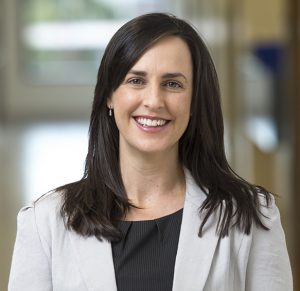
Dr Sarah Zaman
Action is needed to fix the gender gap in interventional cardiology say the authors of a study that shows women make up 4.8% of the specialty and earn half as much as men.
Dr Sarah Zaman from Monash Heart in Melbourne and study co-authors reviewed AHPRA and RACP data and found there were only 19 women working in the sub-speciality in Australia and New Zealand, usually in isolation with no female colleagues amid an almost all-male workforce.
“The gender gap appears unlikely to narrow in the near future given the low female representation in cardiology training (23%) and interventional cardiology (9%)” they write in the Journal of American College of Cardiology.
The gap extends to income, with average earnings for female interventionists of $267,000 while males earned $484,000 in 2015-16, according to ATO figures.
Dr Zaman and colleagues reject the idea women are self-excluding due to concerns over long hours and poor work-life balance, noting that women make up 81% of trainees in obstetrics and gynaecology which demands heavy on-call hours and surgery.
Rather, lack of opportunities, concerns about radiation exposure and the prejudices of male colleagues are the three main barriers, they said pointing to findings of a worldwide survey of female cardiologists.
“The other reported significant barrier to women pursuing an interventional career was a male-dominated culture with a lack of female role models and mentorship,” they add.
The availability of female mentors in senior roles is a powerful enabler and should not be underestimated, says Dr Zaman.
But currently female interventional cardiologists are rarely seen on conference panels and in leadership positions or on committees and make up 3.4% of catheter laboratory directors in public hospitals.
“Myself and my female colleagues, we go to interventional conferences and we sit in the room and we look around and we are the only women there,” Dr Zaman tells the limbic.
“It is quite isolating to be the only woman in the room, because you obviously look different, you sound different and you stand out.”
This year, in an effort to boost female participation in the sub-specialty, Dr Zaman and her interventionist colleagues launched the social network women in interventional cardiology group Australia and New Zealand (WECAN).
They also held an inaugural Women in Cardiology (WIC) working group at CSANZ Meeting, which is devoted to promoting networking and leadership opportunities for women.
“We want to make women more visible, have women present at conferences and we want to look at barriers: discrimination, bias, unconscious bias and whether they may play a role [in the gender gap].
But it is crucial that male cardiologists – particularly those directing cath lab and cardiology units – jump on board, she said.
“Our male cardiologists and directors need to make sure they are actively championing women as they are men. They need to step up and also actively mentor and encourage junior medical staff and students to do cardiology.”
“We need to champion active change if we want to improve this.”